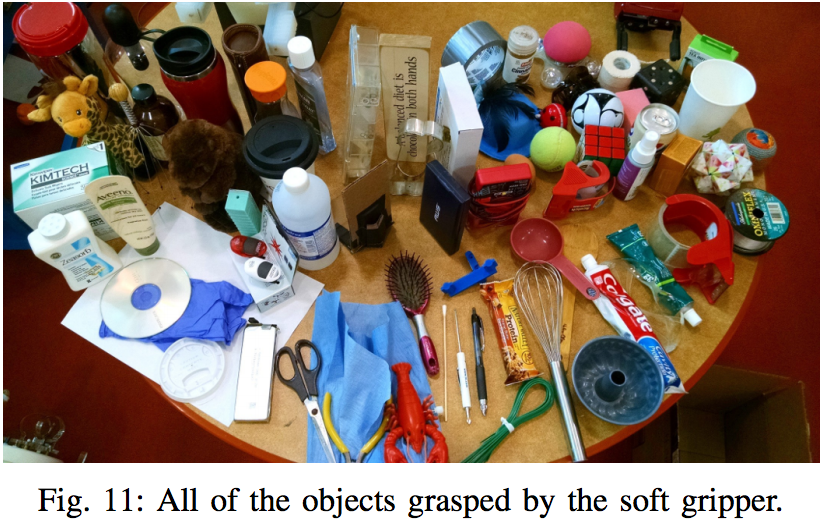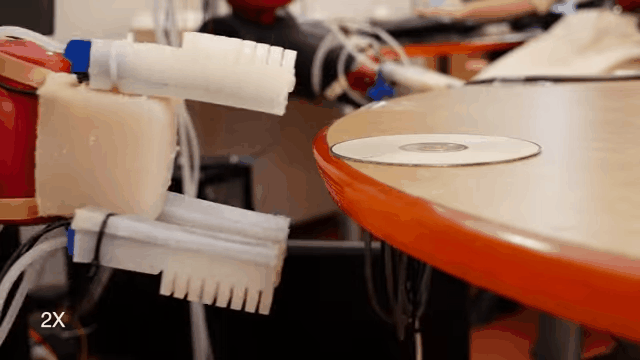It’s easy to forget how amazing the dexterity and anatomy of our own hands are — until you learn how difficult they are to replicate for machines. The Massachusetts Institute of Technology has made big strides in robotic hands this year, and now it’s published a new one.
This week at the International Conference on Intelligent Robots and Systems, Bianca Homberg, Daniela Rus (the director of MIT’s Computer Science and Artificial Intelligence Laboratory) and their colleagues are showing off the latest advance in robotic digits: Modular fingers made of silicone and embedded with sensors, dexterous enough to pick up everything from soft toys to single pieces of paper without needing to be programmed to understand what it’s gripping.
Rus is a pioneer in soft robotics, which are designed using unconventional materials and often incorporate pneumatic systems. In this case, three moulded silicone fingers, ribbed on the inside edge to ease bending and increase friction, are slid over the digits of a robotic arm. Thanks to the soft compliance of the silicone — and a new type of sensing system, which we’ll get to in a minute — the fingers can pick up fragile objects that range wildly in size without prior warning about what the hand is about to encounter, from eggs and CDs to beanie babies, hairbrushes, water bottles, and single pieces of paper.

That’s more of a feat than it sounds like: It’s one thing to program a robotic hand to anticipate the size, weight, and shape of an object it’s being told to grasp. It’s another to put a random object in front of a hand and assume it will have the data necessary to make judgement calls about where to grasp, how hard, and how high.
In the accompanying paper about the hand, Haptic Identification of Objects using a Modular Soft Robotic Gripper, the authors explain how they did it. Where most robotic hands use a sensor nearby, like a camera or motion sensor, they embedded a bending sensor in each finger. When each finger’s sensor bends and sends a signal that it’s touching an object, it knows to stop tightening its grasp. Together, they help the robot generate a triple-sided understanding of what object it’s grasping.
“Robots should be able to pick up a variety of tools designed for human use and be able to handle them appropriately,” say the authors. Hands are, in some ways, the frontier of robotics — and giving them fingers that can “think” on their own is a big step towards making them more like our own.
